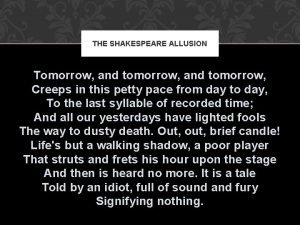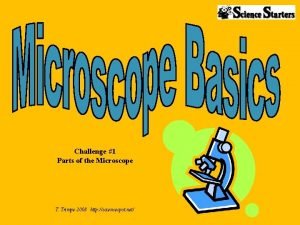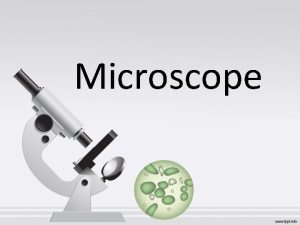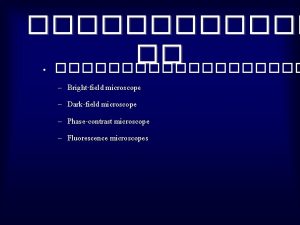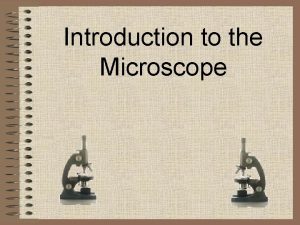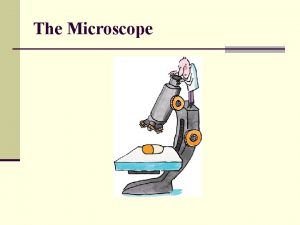HW Microscope questions due tomorrow Quiz tomorrow The








- Slides: 8

HW: Microscope questions due tomorrow Quiz tomorrow

§ The basic unit of length is the meter (m); the unit of mass is the gram (g); and the unit of volume is the liter (L). Scientists will usually use Celsius (C) or Kelvin (K) as the units for temperature, and will measure time in seconds (s).

§ Metric ruler: used to determine length of an object. They are in cm and in and a single inch or centimeter is broken into 10 sections. § Micrometers: Tiny units that are used to measure objects through the microscope.

§ Volume: The amount of space occupies § Graduated cylinder: indicate volume in ml. Measure to the bottom of the meniscus- curved surface

§ Typically measured in degrees Celsius. The Freezing point is 0 degrees C and boiling is 100 degrees C.

§ Mass: The amount of matter in something § Balance: a tool that works by comparing an object of an unknown mass with an object of a known mass. § Triple beam balance: Electronic Balance:

§ Common Metric System Prefixes: § Prefix Symbol Meaning § kilo- K § deci- d 0. 10 § centi- c 0. 01 § milli- m 0. 001 § micro- u 1, 000 0. 0001

§ You will most likely be converting between a millimeter and a micrometer. There are two "steps" between these two measurements: § milli X X micro § If you want to go from a millimeter to a micrometer, you will move the decimal point over to the right three spaces. § For example, 3. 0 millimeters = 3000 micrometers (or 3000 microns) § If you want to go from a micrometer to a millimeter, you will move the decimal point over to the left three spaces. § For example, 265 micrometers=. 0265 millimeters
